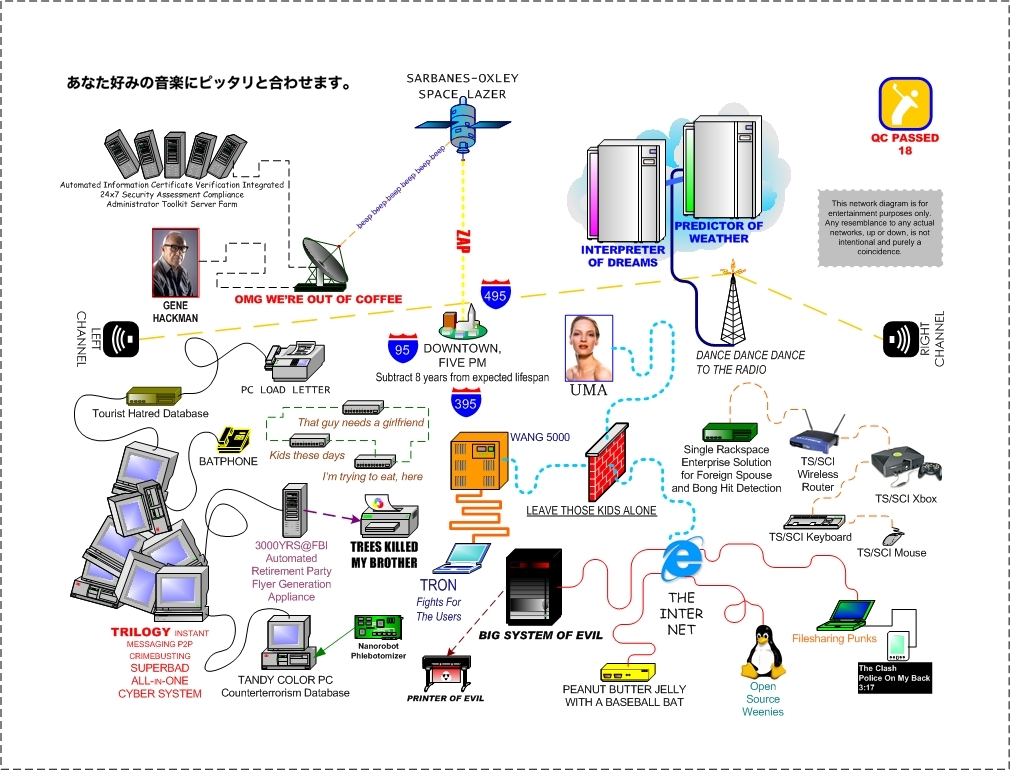A Short History of Cyberwar Lookalikes
Posted June 17th, 2009 by rybolovRybolov’s Note: Hello all, I’m venturing into an open-ended series of blog posts aimed at starting conversation. Note that I’m not selling anything *yet* but ideas and maybe some points for discussion.
Let’s get this out there from the very beginning: I agree with Ranum that full-scale, nation-v/s-nation Cyberwar is not a reality. Not yet anyway, and hopefully it never will be. However, on a smaller scale with well-defined objectives, cyberwar is not only happening now, but it is also a natural progression over the past century.
Looking at where we’re coming from in the existing models and techniques for activities similar to cyberwar, it frames our present state very nicely :
Electronic Countermeasures. This has been happening for some time. The first recorded use of electronic countermeasures (ECM) was in 1905 when the Russians tried to jam radio signals of the Japananese fleet besieging Port Arthur. If you think about ECM as DOS based on radio, sonar, etc, then it seems like cyberwar is just an extension of the same denial of communications that we’ve been doing since communication was “invented”.
Modern Tactical Collection and Jamming. This is where Ranum’s point about spies and soldiers falls apart, mostly because we don’t have clandestine operators doing electronic collection at the tactical level–they’re doing both collection and “attack”. The typical battle flow goes something along the lines of scanning for items of interest, collecting on a specific target, then jamming once hostilities have begun. Doctrinally, collection is called Electronic Support and jamming is called Electronic Attack. What you can expect in a cyberwar is a period of reconnaissance and surveillance for an extended length of time followed by “direct action” during other “kinetic” hostilities.
Radio Station Jamming. This is a wonderful little world that most of you never knew existed. The Warsaw Pact used to jam Radio America and other sorts of fun propaganda that we would send at them. Apparently we’ve had some interesting radio jamming since the end of the Cold War, with China, Cuba, North Korea, and South Korea implicated in some degree or another.
Website Denial-of-Service. Since only old people listen to radio anymore and most news is on the Internet, so it makes sense to DOS news sites with an opposing viewpoint. This happens all the time, with attacks ranging from script kiddies doing ping floods to massive DOSBots and some kind of racketeering action… “You got a nice website, it would be pretty bad if nobody could see it.” Makes me wonder why the US hasn’t taken Al Jazeera off the Internet. Oh, that’s right, somebody already tried it. However, in my mind, jamming something like Al Jazeera is very comparable to jamming Voice of America.
Estonia and Gruzija DOS. These worked pretty well from a denial-of-communications standpoint, but only because of the size of the target. And so what if it did block the Internet, when it comes to military forces, it’s at best an annoyance, at most it will slow you down just enough. Going back to radio jamming, blocking out a signal only works when you have more network to throw at the target than the target has network to communicate with the other end. Believe it or not, there are calculators to determine this.
Given this evolution of communications denial, it’s not unthinkable that people wouldn’t be launching electronic attacks at each other via radar, radio, carrier pigeon, IP or any other way they can.
However, as in the previous precedents and more to some of the points of Ranum’s talk at DojoSec, electronic attacks by themselves only achieve limited objectives. Typically the most likely type of attack is to conduct a physical attack and use the electronic attack, whether it’s radio, radar, or IT assets, to delay the enemy’s response. This is why you have to take an electronic attack seriously if it’s being launched by a country which has a military capable of attacking you physically–it might be just a jamming attack, it might be a precursor to an invasion.
Bottom line here is this: if you use it for communication, it’s a target and has been for some time.
Similar Posts:
Posted in Technical, The Guerilla CISO, What Doesn't Work, What Works |  5 Comments »
5 Comments »
Tags: cashcows • cybercommand • cybercorps • Cyberwar • government • infosec • infosharing • itsatrap • moneymoneymoney • pwnage • risk • security
 Posts RSS
Posts RSS





